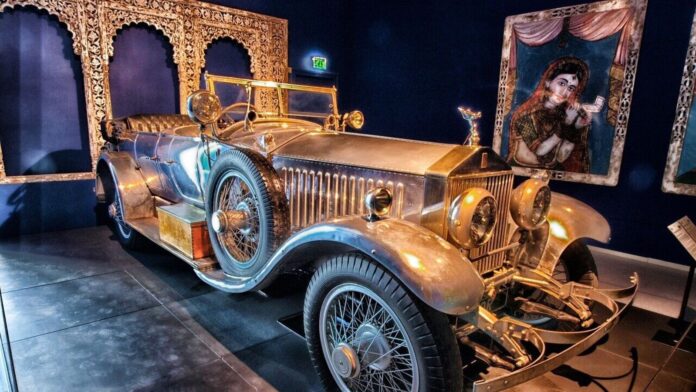In an era marked by opulence and grandeur, the maharajas of India stood as unparalleled exemplars of luxury. With wealth amassed from their dominions, these regal figures elevated indulgence into a celebrated art form, drawing the attention of the world’s premier luxury brands due to their relentless pursuit of the finest possessions.
Today’s billionaires, with their extravagant celebrations, pale in comparison to the maharajas, whose legendary acquisitions of global treasures secured their status as favorites of iconic brands such as Louis Vuitton, Cartier, Christofle, Mauboussin, and Rolls-Royce.
Epitomizing the lifestyle of “champagne wishes and caviar dreams,” these royals embodied Coco Chanel’s notion of luxury—where true extravagance begins after necessity ends.
Iconic acquisitions and eccentricities
Take, for instance, Maharaja Bhupinder Singh of Patiala in the 1920s, who commissioned Cartier to create a lavish necklace featuring the seventh-largest polished diamond in the world, a rare 234.65 carat yellow cushion-cut De Beers diamond, weighing around 1,000 carats in total.
Another notable figure, Maharaja Pratapsinhrao, commissioned a golden cage from Van Cleef & Arpels for his pet frog, which he whimsically employed as a local weather forecaster in Baroda. This cage, adorned with rubies, sapphires, agate, and gold, was as extraordinary as its purpose.
Meanwhile, the Nizam of Hyderabad, Osman Ali Khan, utilized a rare Jacob diamond simply as a paperweight.
These displays of lavishness made the maharajas essential clients for luxury brands. This point is illustrated by the fact that, while the British uber-luxury automaker Rolls-Royce sold 50-60 cars in India last year, between 1903 and 1945, approximately 800 of its vehicles were delivered to India, some even adorned with fine gold.
Mir Osman Ali Khan, the Nizam of Hyderabad, once declared the world’s richest man by Time magazine, owned 50 Rolls-Royce cars, including the esteemed Silver Ghost. He was not alone in his admiration for this marvel of engineering. Sir Fateh Singh Bahadur, the Maharana of Udaipur and Mewar, also cherished a 1914 Rolls-Royce Silver Ghost. They were in good company, joined by global magnates such as Lionel de Rothschild and the Duke of Westminster, who also owned this prestigious vehicle.
Beyond opulence: Cultural and material legacy
These esteemed individuals, both men and a notable few women, cultivated tastes that spanned far beyond automobiles. Their selections of bone China were sourced from Royal Worcester—one of the oldest existing brands, established in 1750—and Minton, a leading name in ceramics during the Victorian era. Their choices in glassware included Lalique and Baccarat crystal, while their stationery was procured from Smythson of Bond Street. When it came to perfumes and cosmetics, only the finest—Detaille, Dior, and Chanel—would suffice.
Although many maharajas were noted for their fashion sensibility, true sartorial elegance was often the domain of the women. Maharani Suniti Devi of Cooch Behar captivated attention at the coronation of King Edward VII in a French-crafted white satin gown adorned with a gold ‘Empire’ wreath design. However, the ultimate style icon was Maharani Indiraje of Cooch Behar, an enthusiastic gambler, who famously ordered Salvatore Ferragamo to create 100 pairs of shoes for her.
Such extravagant spending shadows the current sales figures of these luxury brands in India, despite its 200 billionaires and 326,400 millionaires. Louis Vuitton has recently opened its fourth store in India, while Cartier maintains just two, and Dior three. The annual turnover of these stores is likely dwarfed by what the maharajas would have spent in just one day of shopping in Paris.
The term ‘maharaja’ has thus come to symbolize extravagance and opulence in modern usage. This was evident when the International Finance Corporation named its first onshore rupee bond the ‘Maharaja bonds’ a decade ago. A more commonplace yet equally grand example is the Maharaja Mac from McDonald’s.
However, the advent of independence signalled the end of the lavish revelries of the maharajas, and as their once limitless funds diminished, their treasured jewellery began to surface in auction houses around the globe.
#royalty #met #RollsRoyce #Indian #maharajas #love #affair #luxury
